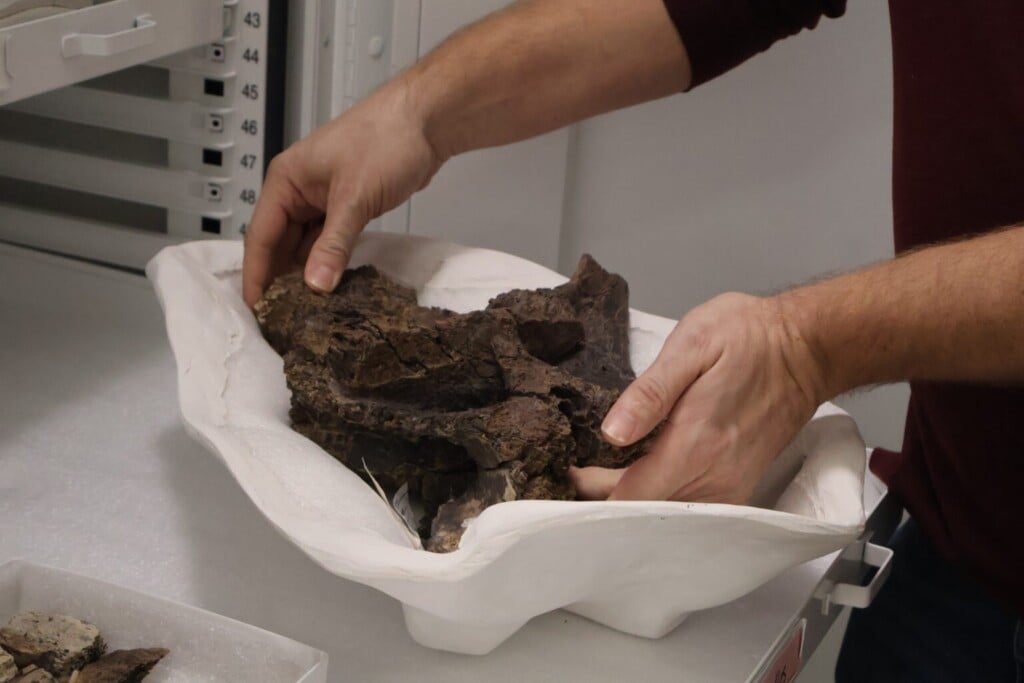Rare T. rex find in North Dakota, mammoth fossil digs ‘significant’ for research

BISMARCK, N.D. (North Dakota Monitor) The North Dakota Geological Survey has found a new Tyrannosaurus rex skeleton at a dig site in southwest North Dakota.
Researchers first discovered the bones in September 2024 while searching for crocodile fossils in Bowman County, according to State Paleontologist Clint Boyd. Tuesday was the first time the find was publicly announced.
Since work at the site was about to close for the year, they couldn’t start excavating it until this year.
They’ve since unearthed nine or 10 bones, Boyd said, including vertebrae, part of the tail, a tooth and an ankle. Boyd said to his knowledge this is the third partial T. rex skeleton found in North Dakota.
“Any T. rex specimen that you find that’s got more than five or six bones is a significant discovery because the animal’s so rare,” Boyd said Tuesday morning at a North Dakota Industrial Commission meeting.
The agency on Tuesday also shared updates about two mammoths it’s excavating: one underneath a residential garage in northwest North Dakota and another discovered at a coal mine near Beulah.
Boyd said the specimen under the garage has deep grooves in its vertebrae — an indicator of severe malnutrition or bone disease.
“It was probably very sick toward the end of its life,” he said.
According to Boyd, those deformities are not common in mammoth fossils. To date, researchers have only documented it in mammoths found in Asia and Europe, he said.
“So it’s going to be not just a nice, beautiful specimen eventually coming into the state fossil collection, but actually a significant specimen that’s going to teach us more about these animals,” he said.
Boyd said the agency has also found the bones of small mammals there. “We may end up getting a whole ecology story out of this one site,” he said.
The tusk just finished a nearly yearlong cleaning and preservation process, Boyd said.
In addition to the tusk, the agency has identified other bones including a hip, one shoulder blade and some ribs. Based on the tusk’s shape, the animal is likely a Columbian mammoth, not a woolly mammoth, he said.
Boyd indicated the fossils will eventually be on display for the public.
By Mary Steurer.






